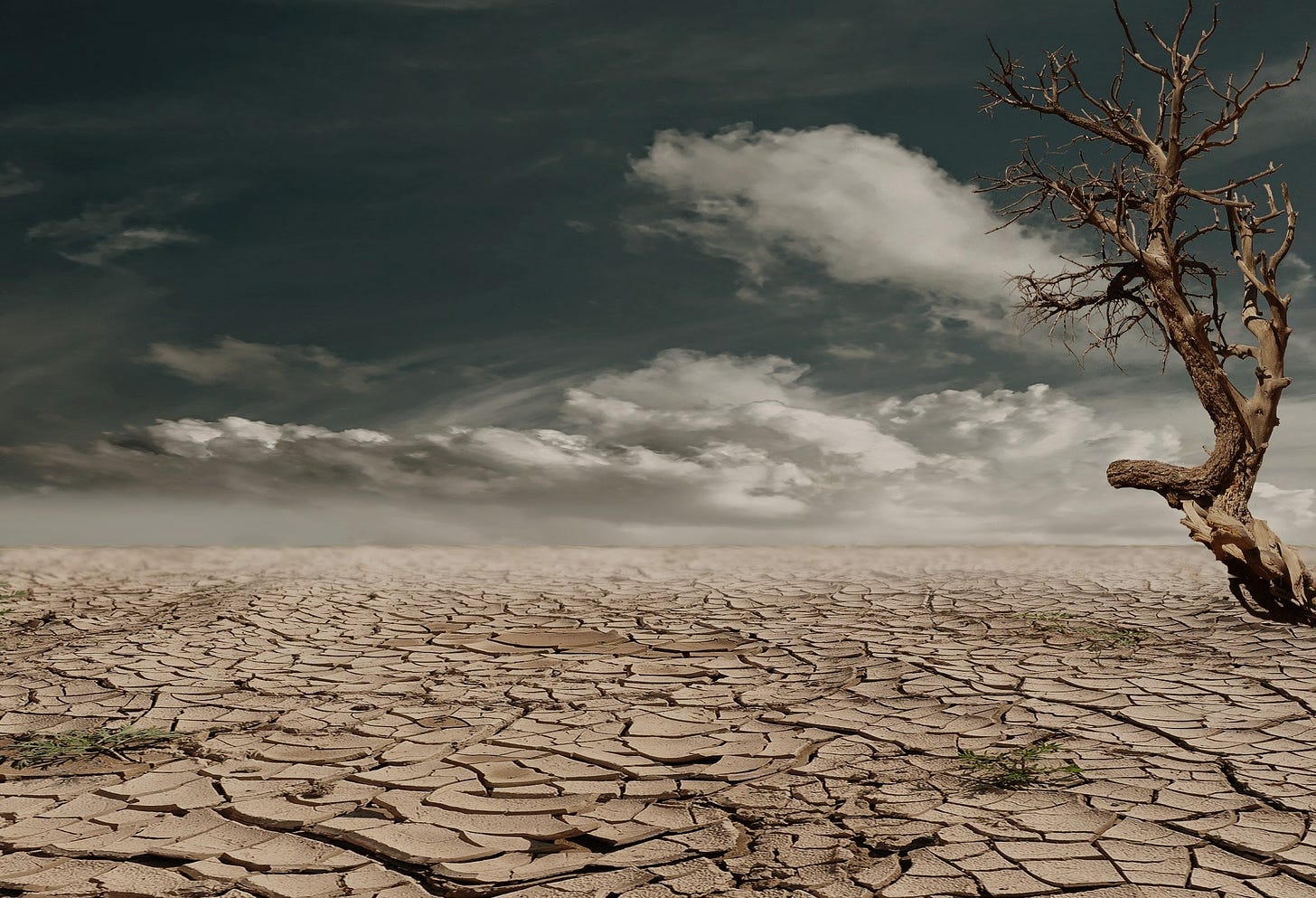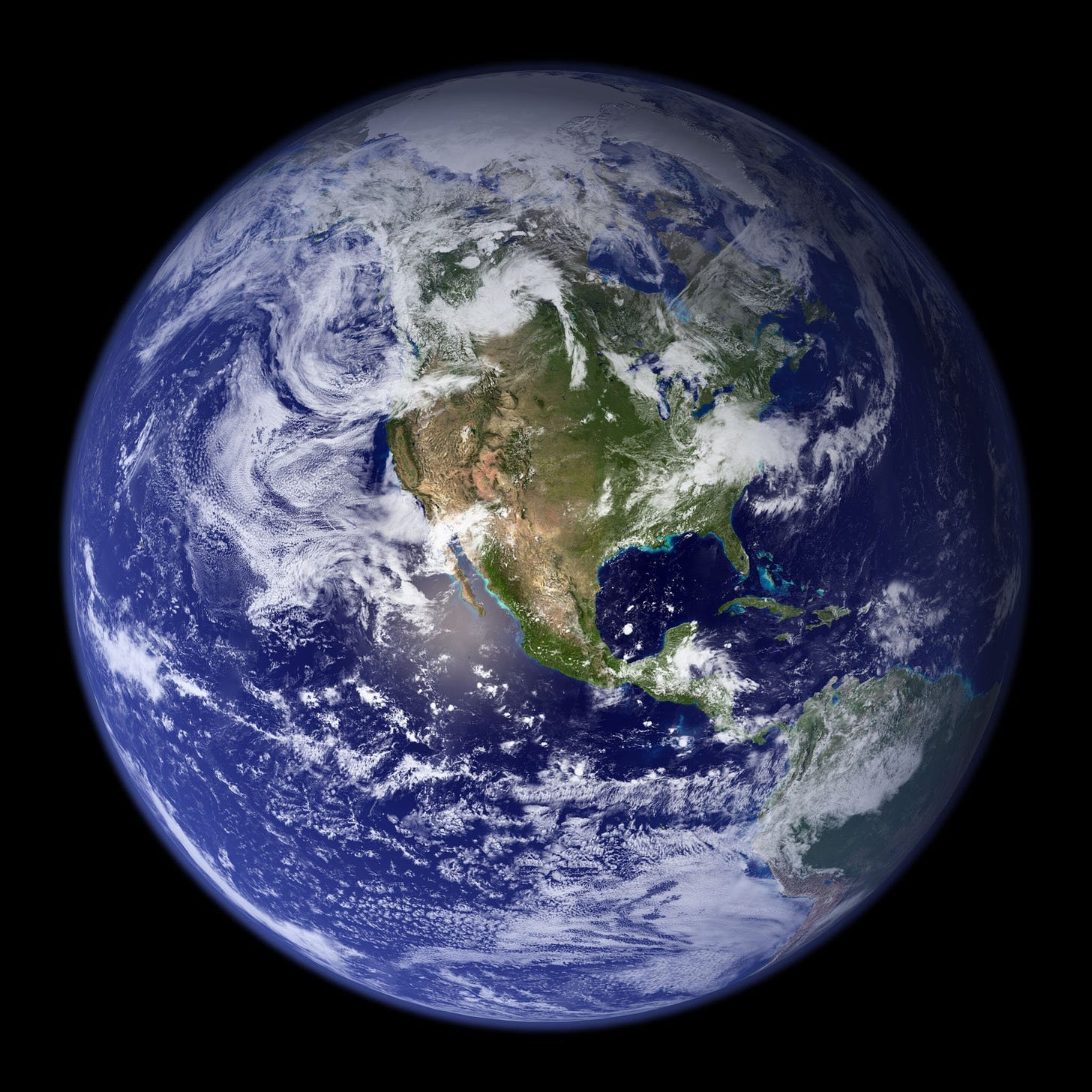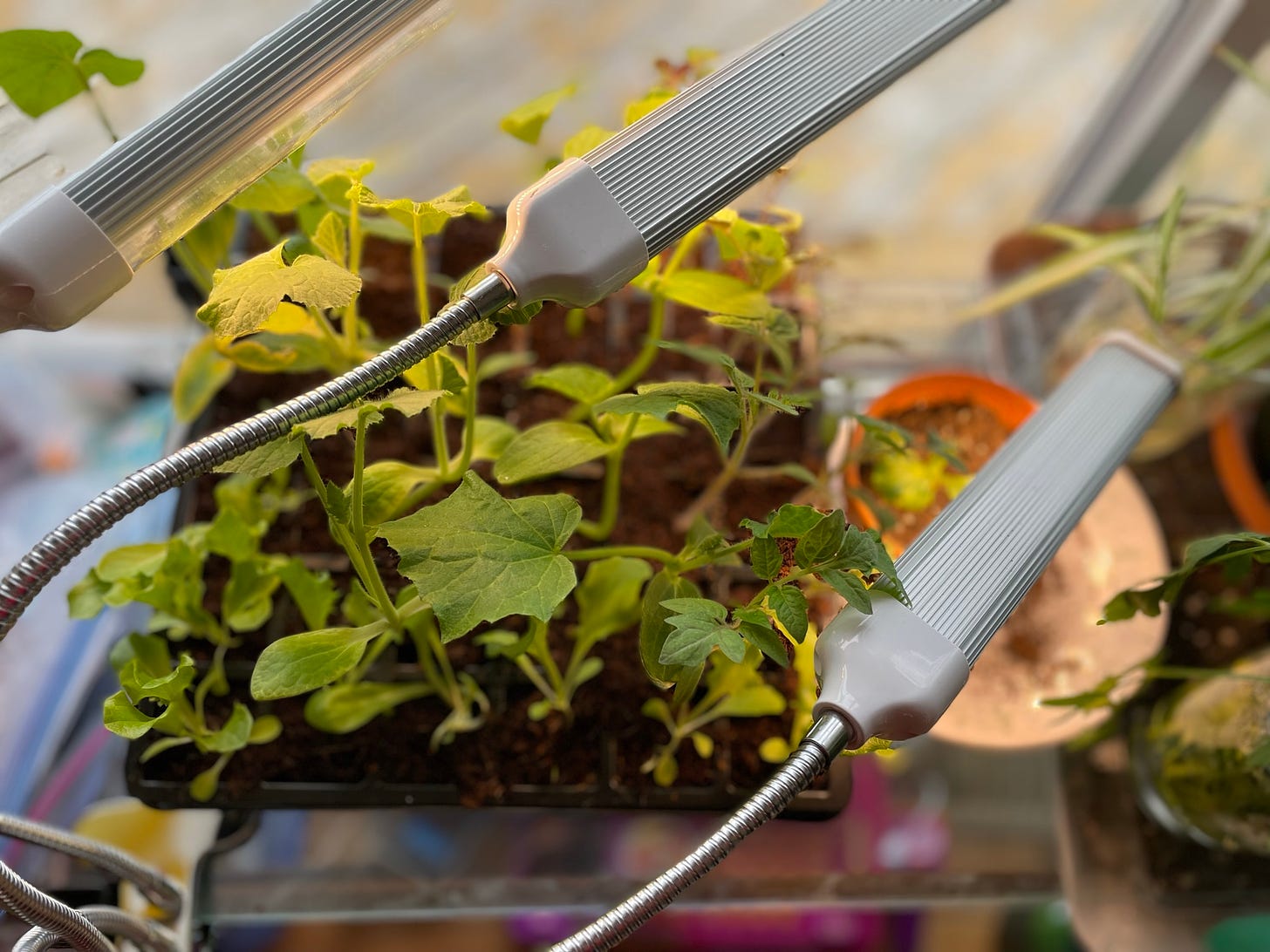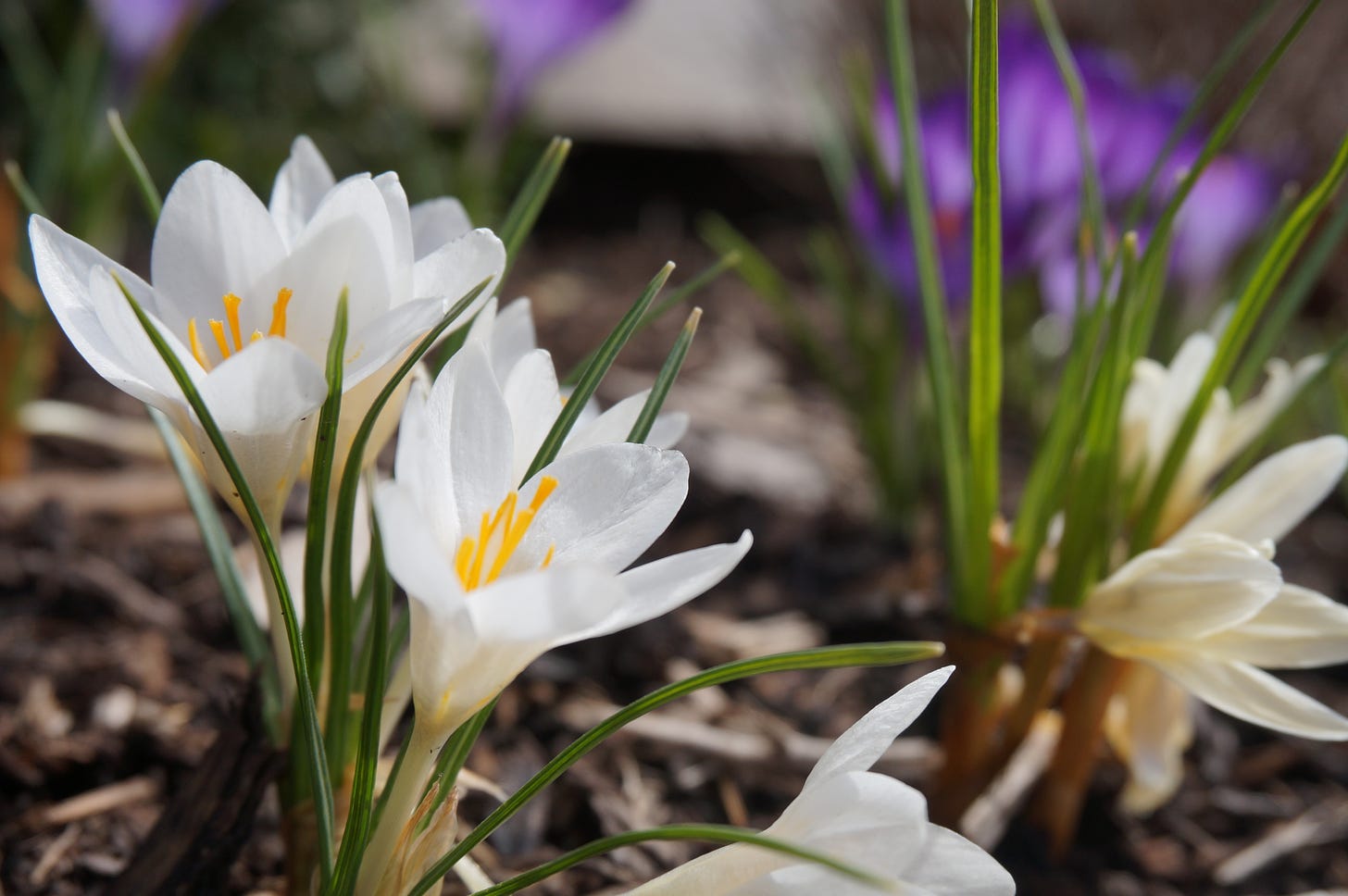Singing Alleluia When the Earth is Being Crucified
A reflection on the resurrection of Jesus and our responsibility to the Earth

Happy Easter! Many of us worshipped this weekend, singing “Alleluia! Christ is risen! Christ is risen, indeed.”
Yet, even as I sing Alleluia, I am haunted by a question that environmental activist-turned-Episcopal priest Stephen Blackmer asked a number of years ago. “What does resurrection look like when it is the Earth that is being crucified?”1 What does resurrection look like in a world of global heating, species extinction, air, water and soil pollution, massive deforestation, and climate refugees?
How can we preach resurrection, how can we sing Alleluia, when the Earth is suffering? The reality of the climate emergency is that, if we do not take the steps outlined in the IPCC’s latest report, humans are headed for extinction. How can we say that we believe in life after death, that death does not have the last word, when we are headed for the annihilation of our species?
These questions haunt me. I sing Alleluia, but these questions will not leave me alone.
And since they won’t leave me alone, I am called to grapple with them. What does resurrection mean when the Earth is being crucified?
Looking at the Bodily Resurrection
Through the influence of both theological and philosophical factors, one of the unfortunate interpretations of the resurrection of Jesus has been to shift our emphasis from life on Earth to wherever we will ‘go’ once we die. This has led to an otherworldly orientation within the Christian tradition; a fixation on what happens after we die, rather than on how faithfully we can live while we are alive. We have come to emphasize spirit over matter, as though they can be separated. We have come to prefer the mind over the body, as though our minds can somehow exist in a disembodied way. This otherworldly emphasis has had devastating consequences for anyone who is considered more bodily or material, such as women and racialized peoples. It has also played a direct role in the ecological crisis that we are in, thanks to the dominant Euro-western Christian worldview that places an otherworldly emphasis at its centre.
Yet, this otherworldly way of looking at things is not biblical; it is not an accurate interpretation of the resurrection. Regardless of how we understand and interpret the resurrection of Jesus (did it literally happen? Or is it a metaphor for an eternal truth?), there is one meaning of the resurrection that is of central importance: it was the bodily resurrection of Jesus. If you recall, when Jesus appeared on Easter morning to the disciples, they “took hold of his feet, and worshiped him” (Matthew 28.9b). He was still there (until his ascension into heaven 50 days later) in body. What we are taught from this (again however we interpret it) is that we, too, are to be transformed bodily, after our deaths. We are promised that one day, we will all be raised into bodily new life with Jesus Christ.
This is a complex teaching, as I have already alluded to, and I am not trying to simplify it in any way. However, that Jesus’ resurrection was a bodily one is central to its meaning. Among other things, the truth of the resurrection teaches Christians that:
Love wins out over death;
Death is not the final word;
Love is the answer.
All of these truths are inexorably, inherently embodied. And there is another meaning to the resurrection that is just as embodied: it is that matter matters! Matter, the stuff of soil and rocks, of plants and insects, of humans and antelopes, of oxygen and carbon dioxide; it all matters. How do we know this? Because God became enfleshed as part of God’s good creation, as the human dimension of God’s creation, in Jesus. Through the living, dying, and resurrection of Jesus, God shows us that matter matters.
What Does This Mean for Us?
What this means for us, then, is that there is no escaping this world, this Earth community in which we live and move and have our being. There is no otherworldly place to which we can escape. Despite the common image of heaven as a space ‘out there’ that we hope to go after we die, and where we imagine Jesus sitting with God the Creator (‘Father’ in scripture), there is no singular definition provided. In fact, scripture and tradition offer ways of interpreting heaven closer to how Norman Wirzba, who I quoted last week, imagines it. He suggests that heaven is “the Spirit’s transformation of relationships so that they lead to the wholeness of life.”2
Between this idea and the truth, however understood, of the bodily resurrection of Jesus, we are meant to focus on life in this life. We are to focus on bodies, our bodies and the bodies around us, in relationship with one another. We are to focus on human bodies and animal bodies, plant bodies and mountain bodies. The Earth body, and all of its complex systems that make it the Earth, itself. It is here, among human and other bodies, within and on the Earth body, that the Spirit seeks to transform relationships. Wirzba says,
“If heaven is the fulfillment of life and the complete realization of all that life can and forever was meant to be, then it is not only for the future: sensing and imagining heaven, glimpsing its contours and features, we are invited to adjust the living we do now so that our life together might more fully realize the eternal Sabbath banquet planted within creation at its beginning.”3

What Does This Mean for the Earth?
We can see, then, how the Earth is not experiencing the resurrection truth right now; the Earth is not singing Alleluia. Along with so many people in extreme suffering today, the crucifixion is being experienced by the largest, all-encompassing body of all. The Earth is being crucified with fossil fuel emissions by an oil and gas industry in the face of all that they have known for decades. They know that the Earth is innocent, and yet they crucify the Earth.
The Earth is being crucified by the complacency and silence of world governments who fail to hold those industries to account. In effect they cry, “Crucify the Earth! Crucify!”
The Earth is living in an unending Good Friday right now. The suffering, the agony, the fear and the pain, they continue for the Earth. While it is Easter for Christians now, it is not yet Easter for the Earth. As we sing Alleluia this Easter, how do we live, how do we act so that the Earth, too, can sing of resurrection?
Let us Take Our Alleluias
We need to take the Alleluias that we sang on Sunday, and transform them. We need to transform our Alleluias into action on behalf of the crucified Earth. Our Alleluias must become climate action:
Alleluias of protest
Alleluias of policy
Alleluias of transformation in our lives, homes, communities, the world
If we sing Alleluia at Jesus’ resurrection, then we mustn’t allow ourselves, however inadvertently, to look away from the Earth toward an otherworldly future, ignoring the crucifixions that are still happening, ignoring where Good Friday is still here.
We are an Easter people who believe in the truth of the resurrection, the truth that matter matters, that death does not have the last world. Let us take our Alleluias, then, and work for Earth to become an Easter Earth, an Easter Earth that overcomes the death of climate and ecological crisis. Let us take our Alleluias to transform the Earth, and in doing so, be transformed.
Stephen Blackmer, “Being Church as If Earth Matters: A Response to Journey of the Universe from One Episcopalian’s Perspective,” in Living Cosmology: Christian Responses to Journey of the Universe, ed. Mary Evelyn Tucker and John Grim (Maryknoll, NY: Orbis Books, 2016), 140.
Norman Wirzba, Food and Faith: A Theology of Eating (Cambridge: Cambridge University Press, 2011), xviii.
Ibid., 212.
Call to Action
Sow Some Seeds
Now that it is April I can properly talk about gardening! As I said in last week’s reflection, something that is really important for us to reconnect with the Earth, the literal earth right around us, is to grow something. Growing food can help us connect with where our food comes from, as well as with the farmers who work hard to bring food to us. Growing food, as well as flowers and other plants, also helps us to connect with the seasons where we are, and with the particular places in which we live.
This kind of connecting is essential to the work of climate action, because, as I said above, everything is embodied. We need to become grounded again, embodied again, in the earth, in the sun, wind and rain, all around us. So I invite you to sow some seeds! Either outside as soon as the risk of frost is past (you can check here for your area: https://www.almanac.com/gardening/frostdates ), or inside, starting tomatoes and other plants for your garden.
The picture, above, is of my seed starters. It’s my first time, and I am sure that I am making mistakes, but already I am experiencing the joy and connection of watching tiny seeds begin to sprout. They feel like my babies! Have you started to grow things this year? I would love to share your pictures with this community.
This spring, I encourage you to sow some seeds. Doing so can be discipleship in action.
Earth Community in Pictures
Subscriber Catherine MacDonald, who lives in Eastern Passage, Nova Scotia, shared this lovely picture of crocuses, taken a few years ago. Beautiful!
Let us continue to show the progression of spring in this space. As your flowers and trees bloom, please send me pictures to share with our community here. Send them to: jessica@jessicahetherington.ca.







